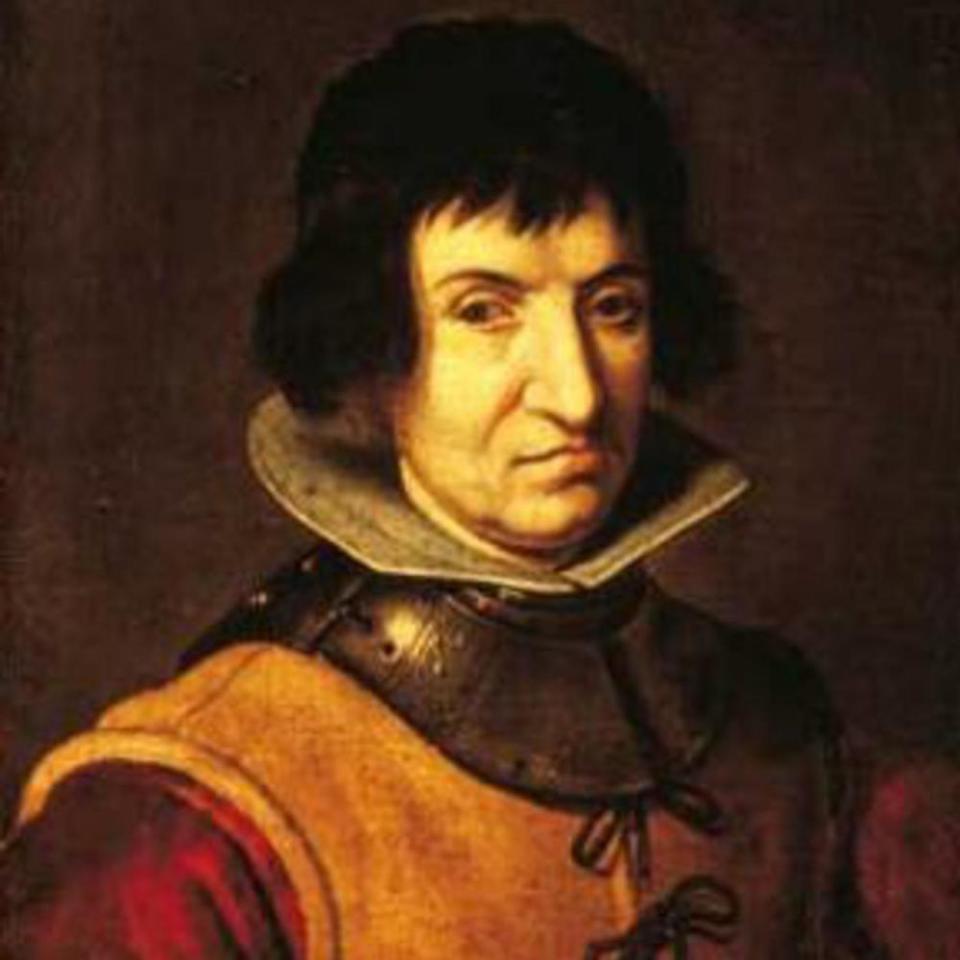Saint, soldier, writer: Spain celebrates forgotten women of its Golden Age
Centuries after their deaths and months after their big moment was almost thwarted by Covid-19, a saint, a cross-dressing soldier, an early professional playwright and a group of intrepid nuns are the subject of an exhibition that celebrates the often overlooked female writers of Spain’s Golden Age.
While the names and works of male authors such as Cervantes, Calderón de la Barca and Lope de Vega live on, the same cannot always be said of the women who wrote around the same time.
The exhibition in Madrid, staged by the Instituto Cervantes and Spain’s National Library, aims to redress the imbalance – or as Luis García Montero, the institute’s director, puts it, “to help us recover our memory and dynamite the canon”.
The show, Both Wise and Valiant, opened on 5 March but had to shut down and move online when the pandemic hit shortly afterwards. It will now reopen on 18 June and run until September.
Its curator, Ana M Rodríguez-Rodríguez, hopes it will spark interest in some of the forgotten pathfinders of Spanish letters. A few of the featured writers – including St Teresa of Ávila and Sister Juana Inés de la Cruz – are still widely read, but many are not.
“Over the past few decades, specialists have been discovering these texts by women, but the general public don’t really know much about them and aren’t aware of the richness of these women’s writing,” says Rodríguez-Rodríguez, who teaches Spanish literature at the University of Iowa.

Around 80% of the writers in the exhibition are women who, paradoxically, found freedom in the cells and cloisters of the convents where they lived as nuns.
Freed from their roles as wives, mothers and daughters, says the curator, “they could devote themselves to reading, writing and rather more intellectual pursuits than society would have permitted them on the outside”.
But not all were content to stay put. A document from 1722 recounts the extraordinary story of five Capuchin sisters who wanted to leave Madrid to found a convent in Lima, Peru.
Having pleading with their male superiors to be allowed to journey to the New World, they were forced to turn back after being attacked by pirates. Undaunted, they set out again. One of the nuns died from breast cancer en route, but the others made it to Buenos Aires and then to Lima.
“They describe how they were welcomed by the people there – and talk about their own ‘otherness’,” says Rodríguez-Rodríguez. “It really does deserve to be made into a TV series or a film.”
More amazing still – and already the subject of films and plays – is the true story of Catalina de Erauso, also known as the Nun Lieutenant.
“She was someone we’d doubtless call transgender today,” says the curator. “She was born a biological woman, went into a convent, escaped from it and ended up fleeing to the Americas. Once there, she passes herself off not just as a man but as a Spanish imperial soldier. She fights and lives as a man and has affairs with women.”
And then there is Ana Caro, a playwright who was paid for her work in Madrid and Seville. One of the documents in the exhibition records a payment made to her in 1638 – two years before Aphra Behn, commonly agreed to be the first female professional English playwright, is thought to have been born.
Like Calderón and Lope de Vega, Caro explored the Golden Age staple of lost honour. But in her self-explanatory play Courage, Betrayal and A Woman Scorned, the protagonist is anything but a passive bystander when it comes to her own honour.
“She dresses as a man and crosses Europe to defend her rights and to find her place in society after her reputation’s been taken from her,” says Rodríguez-Rodríguez.
The texts still resonate, the curator says, as women continue to be victims of violence and are still judged over their bodies and what they do with them.
The exhibition also reveals the presence of women at the other end of the literary production chain: while many 16th- and 17th-century female printers inherited the business from their husbands and fathers, some sent out editions under their own names, and refused to sign themselves as widows or daughters.
Rodríguez-Rodríguez believes recognition of these women and the “almost subversive” fact of their writing is long overdue. Without them, she adds, we have an incomplete canon that tells only half the story of Spain’s Golden Age.
• This headline of this article was amended on 7 June 2020 to more accurately reflect the content of the piece.

 Yahoo News
Yahoo News 
